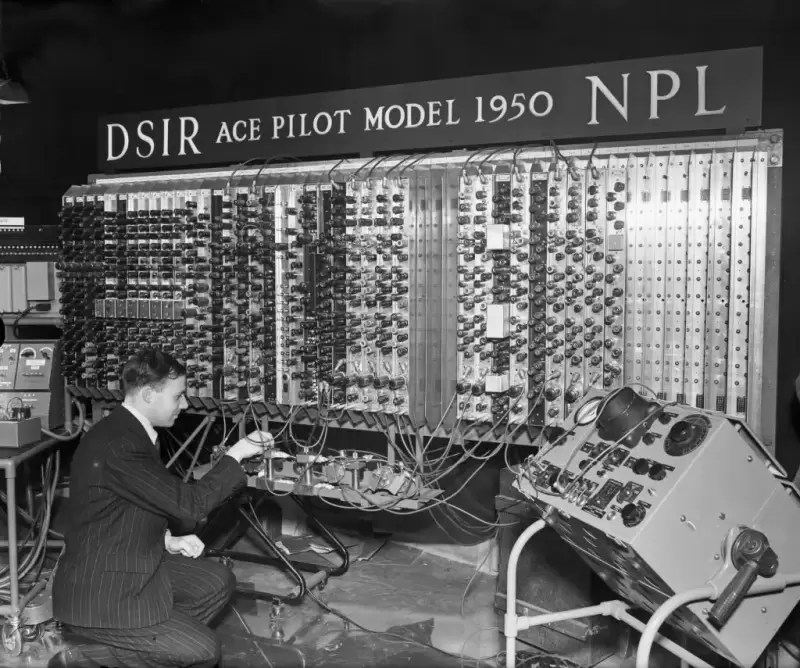 |
|
 |
|
 |
|
 |
|
 |
|
 |
|
 |
|
 |
|
 |
|
 |
|
 |
|
 |
|
 |
|
 |
|
 |
|
这不是“我们忘记的东西”的感觉,而是从核心建筑意义上讲。它没有真实的内存层。

Web3 has a memory problem. Not in the “we forgot something” sense, but in the core architectural sense. It doesn’t have a real memory layer.
Web3有一个内存问题。不是在“我们忘记了某些东西”的意义上,而是从核心建筑意义上讲。它没有真实的内存层。
Blockchains today don’t look completely alien compared to traditional computers, but a core foundational aspect of legacy computing is still missing: A memory layer built for decentralization that will support the next iteration of the internet.
与传统计算机相比,当今区块链看起来并不完全是陌生的,但是遗留计算的核心基础方面仍然缺少:用于分散式中心化的内存层,将支持Internet的下一次迭代。
After World War II, John von Neumann laid out the architecture for modern computers. Every computer needs input and output, a CPU for control and arithmetic, and memory to store the latest version data, along with a “bus” to retrieve and update that data in the memory. Commonly known as RAM, this architecture has been the foundation of computing for decades.
第二次世界大战后,约翰·冯·诺伊曼(John von Neumann)列出了现代计算机的建筑。每个计算机都需要输入和输出,用于控制和算术的CPU以及存储器存储最新版本数据,以及“总线”以检索和更新该数据在内存中。几十年来,这种体系结构通常称为RAM,一直是计算的基础。
At its core, Web3 is a decentralized computer — a “world computer.” At the higher layers, it’s fairly recognizable: operating systems (EVM, SVM) running on thousands of decentralized nodes, powering decentralized applications and protocols.
Web3的核心是一台分散的计算机,这是一台“世界计算机”。在较高的层上,它是相当可识别的:操作系统(EVM,SVM)在数千个分散的节点上运行,为分散的应用程序和协议提供动力。
But, when you dig deeper, something’s missing. The memory layer essential for storing, accessing and updating short-term and long term data, doesn’t look like the memory bus or memory unit von Neumann envisioned. Instead, it's a mashup of different best-effort approaches to achieve this purpose, and the results are overall messy, inefficient and hard to navigate.
但是,当您深入研究时,缺少一些东西。存储层对于存储,访问和更新短期和长期数据必不可少,看起来不像是设想的内存总线或内存单元。取而代之的是,它是实现此目的的不同最佳方法的混搭,结果总体上是混乱,效率低下且难以导航。
Here’s the problem: if we’re going to build a world computer that’s fundamentally different from the von Neumann model, there better be a really good reason to do so. As of right now, Web3’s memory layer isn’t just different, it’s convoluted and inefficient. Transactions are slow. Storage is sluggish and costly. Scaling for mass adoption with this current approach is nigh impossible. And, that’s not what decentralization was supposed to be about.
问题是:如果我们要构建一台与冯·诺伊曼(Von Neumann)模型根本不同的世界计算机,那么最好有一个很好的理由这样做。截至目前,Web3的内存层不仅不同,而且令人费解且效率低下。交易很慢。存储迟钝且昂贵。使用这种当前方法进行大规模采用的扩展是不可能的。而且,这不是权力下放的意义。
But there is another way. A lot of people in this space are trying their best to work around this limitation and we're at a point now where the current workaround solutions just cannot keep up. This is where using algebraic coding, which makes use of equations to represent data for efficiency, resilience and flexibility, comes in.
但是还有另一种方式。这个领域的许多人都在尽力解决这一限制,而我们现在正处于当前的解决解决方案无法跟上的时刻。在这里,使用代数编码(利用方程式代表效率,弹性和灵活性)的数据出现。
The core problem is this: how do we implement decentralized code for Web3?
核心问题是:我们如何为Web3实施分散的代码?
This is why I took the leap from academia where I held the role of MIT NEC Chair and Professor of Software Science and Engineering to dedicate myself and a team of experts in advancing high-performance memory for Web3. I saw something bigger: the potential to redefine how we think about computing in a decentralized world.
这就是为什么我从学术界取得了飞跃的原因,在那里我担任MIT NEC主席和软件科学和工程学教授,奉献自己和专家团队,以推进Web3的高性能记忆。我看到了更大的东西:重新定义我们对分散世界中计算的看法的潜力。
My team at Optimum is creating decentralized memory that works like a dedicated computer. Our approach is powered by Random Linear Network Coding (RLNC), a technology developed in my MIT lab over nearly two decades. It’s a proven data coding method that maximizes throughput and resilience in high-reliability networks from industrial systems to the internet.
我的最佳团队是创建像专用计算机一样工作的分散记忆。我们的方法由随机线性网络编码(RLNC)提供动力,这是我的MIT实验室中近二十年来开发的技术。这是一种已验证的数据编码方法,可最大程度地提高从工业系统到互联网的高可靠性网络中的吞吐量和弹性。
Data coding is the process of converting information from one format to another for efficient storage, transmission or processing. Data coding has been around for decades and there are many iterations of it in use in networks today. RLNC is the modern approach to data coding built specifically for decentralized computing. This scheme transforms data into packets for transmission across a network of nodes, ensuring high speed and efficiency.
数据编码是将信息从一种格式转换为另一种格式以进行有效存储,传输或处理的过程。数据编码已经存在数十年了,当今网络中使用了许多迭代。 RLNC是专门用于分散计算的数据编码的现代方法。该方案将数据转换为跨节点网络传输的数据包,从而确保高速和效率。
With multiple engineering awards from top global institutions, more than 80 patents, and numerous real-world deployments, RLNC is not only a theory but a tested and proven technology. It has received recognition such as the 2009 IEEE Communications Society and Information Theory Society Joint Paper Award for the work "A Random Linear Network Coding Approach to Multicast." RLNC's broader impact was acknowledged with the IEEE Koji Kobayashi Computers and Communications Award in 2022.
凭借来自全球顶级机构的多个工程奖项,80多种专利以及众多现实世界的部署,RLNC不仅是一种理论,而且是经过测试和经过验证的技术。它已获得认可,例如2009年IEEE通信协会和信息理论协会联合论文奖,即“一种随机的线性网络编码方法”。 RLNC在2022年获得IEEE Koji Kobayashi计算机和通信奖,对RLNC的更大影响得到了认可。
Now, RLNC is ready for decentralized systems, enabling faster data propagation, efficient storage, and real-time access, making it a key solution for Web3’s scalability and efficiency challenges.
现在,RLNC已准备好用于分散系统,实现更快的数据传播,有效的存储和实时访问,这使其成为Web3的可扩展性和效率挑战的关键解决方案。
Let’s take a step back. Why does all of this matter? Because we need memory for the world computer that’s not just decentralized but also efficient, scalable and reliable.
让我们退后一步。为什么所有这些都重要?因为我们需要对世界计算机的记忆,而不仅是分散的,而且还可以有效,可扩展和可靠。
Currently, blockchains rely on best-effort, ad hoc solutions that achieve partially what memory in high-performance computing does. What they lack is a unified memory layer that encompasses both the memory bus for data propagation and the RAM for data storage and access.
目前,区块链依赖于最佳富度,临时解决方案,这些解决方案在高性能计算中的部分内存中有部分实现。他们缺少的是一个统一的内存层,该内存层既包含用于数据传播的内存总线,又包含用于数据存储和访问的RAM。
The bus part of the computer should not become the bottleneck, as it does now. Let me explain.
现在,计算机的公共汽车部分不应像现在一样成为瓶颈。让我解释一下。
“Gossip” is the common method for data propagation in blockchain networks. It is a peer-to-peer communication protocol in which nodes exchange information with random peers to spread data across the network. In its current implementation, it struggles at scale.
“八卦”是区块链网络中数据传播的常见方法。这是一个点对点通信协议,在该协议中,用随机对等方向交换信息来传播数据,以在整个网络中传播数据。在目前的实施中,它在大规模上挣扎。
Imagine you need 10 pieces of information from neighbors who repeat what they’ve heard. As you speak to them, at first you get new information. But as you approach nine out of 10, the chance of hearing something new from a neighbor drops,
想象一下,您需要从邻居那里重复他们听到的信息的10条信息。当您与他们交谈时,首先您会得到新信息。但是,当您接近10分之九的时,从邻居下降的机会中,
免责声明:info@kdj.com
所提供的信息并非交易建议。根据本文提供的信息进行的任何投资,kdj.com不承担任何责任。加密货币具有高波动性,强烈建议您深入研究后,谨慎投资!
如您认为本网站上使用的内容侵犯了您的版权,请立即联系我们(info@kdj.com),我们将及时删除。
-

-

-

- Pytorch变压器编码器解释了
- 2025-04-03 04:45:12
- 变压器编码器是一种深度学习体系结构,旨在有效地处理输入序列。
-

-

-

- 模因硬币市场进入了一个新时代。最初的笑话和互联网趣味发展成为了严重的加密投资部分。
- 2025-04-03 04:40:12
- 模因硬币现在结合了讲故事,实用性和高压社区,并有可能提供指数回报。
-

-

-

- 吉尔吉斯斯坦继续巩固其作为区域加密枢纽的地位
- 2025-04-03 04:30:12
- 该国正在推进其数字资产法规,测试法律框架和启动许可平台。




























































